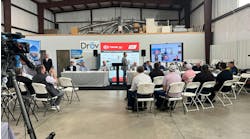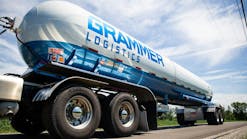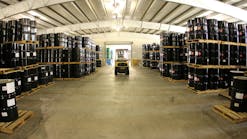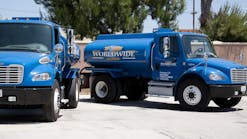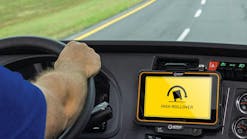Indeca Crude Xpress is installing Emergency Safety Solutions’ new H.E.L.P. (Hazard Enhanced Location Protocol) DeliverSAFE safety feature in its crude oil-hauling trucks serving the Permian Basin.
Emergency Safety Solutions (ESS) reports it recently completed the first phase of installations, which represent the first commercial truck application for the Houston-based company’s intelligent emergency communications solution. H.E.L.P. is a regulations-compliant feature that increases the conspicuity of disabled and shouldered vehicles along the roadside to help prevent crashes that kill and injure thousands each year across the U.S.
“Indeca is passionate about keeping people safe, especially here in the Permian Basin,” said Steve Williamson, CEO of Indeca Crude Xpress. “The roads and infrastructure here were simply not designed for the current level of use, as reflected by the high crash and fatality rates in this region.”
H.E.L.P. DeliverSAFE provides two forms of advanced notification to oncoming motorists, giving them more time to react to and safely avoid stationary vehicles and their occupants:
- Digital alerts: Notifications sent to oncoming drivers through their in-vehicle dashboard displays and GPS mapping apps, such as Waze and Apple Maps, providing advance warning they are approaching a disabled or stationary vehicle, even beyond line of sight.
- Lighting alerts: An improved and enhanced hazard flash pattern the company says is “scientifically tuned and proven” to grab the attention of oncoming drivers and prompt them to slow down and move over a lane.
The initial installation covers about a quarter of Indeca’s oil transport fleet operating in the Permian Basin area in West Texas, with the remainder of installations planned for later this year, the companies said. H.E.L.P. DeliverSAFE is integrated with the Indeca truck fleet’s existing on-board telematics and lighting systems.
“Our trucks are often in vulnerable positions along the road, so we’re constantly looking for the best available solutions and technologies to ensure we maintain our exceptional safety record,” Williamson said. “We believe H.E.L.P. DeliverSAFE will make a tremendous difference in increasing the visibility of our trucks and enhancing the overall safety of our drivers and fleet.”
The Permian Basin has seen an increase in truck traffic in recent years as crude oil is transported to Gulf Coast refineries in Texas, and fracking activities have expanded. The traffic levels have surpassed current infrastructure capacity, leading to increased congestion, road damage, and intolerable daily roadway fatalities and injuries, ESS said.
The efficacy of H.E.L.P. lighting alerts was validated in a spring 2022 on-road study by Virginia Tech Transportation Institute, which examined oncoming driver response to a disabled passenger vehicle with H.E.L.P. lighting alerts flashing at 5 Hz (approximately five times per second) vs. the standard hazard flash rate of 1.5 Hz. The study found drivers slowed down and moved over sooner when approaching a vehicle with H.E.L.P.’s higher frequency hazard lighting vs. traditional hazard lighting, which hasn’t changed in 71 years.
“We see this as a lifesaving innovation and an ideal solution for increasing roadside safety for transport drivers, who often pull over on the side of the road when they reach hours limits, wait for deliveries or simply have some vehicle trouble,” said David Tucker, CEO of ESS. “H.E.L.P. DeliverSAFE uses visible and digital cues to alert oncoming motorists of stranded or parked trucks along the road ahead—even beyond their line of sight—so they’re in a far better position to safely steer clear of them.”

